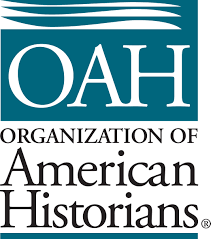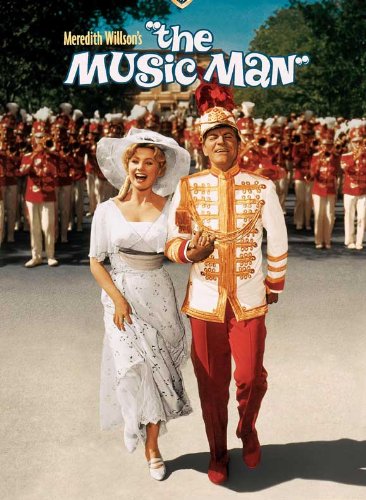
This blog is a continuation of posts on the cancelled conference of the Organization of American Historians. For the first post go to The Organization of American Historians (OAH) Conference: What Would Have Been Presented?
This blog focuses on the sessions related to American Indians as did the first one. There seem to have been quite a few sessions dedicated to this topic. It may also be that as I reviewed the online abstracts and schedule, I was drawn to these sessions. The sessions covered in the first blog tended to be about Plains Indians and not Woodlands Indians who live in New York where I live.
Urban Indian Country: Segregation and Disaster in Twentieth-Century Rapid City
In 1972 a flood tore through Rapid City, South Dakota, killing 238 people. Many whose lives and homes were destroyed lived in a predominately Native American neighborhood known as “Osh Kosh Camp.” This paper asks: Why did those people live in that neighborhood at that time? I argue that white Americans racialized certain spaces under the conceptual framework of Indian Country as part of the process of American conquest on the northern plains, creating continuities between policies of removal, the institution of the reservation system and twentieth-century urban segregation. The American project of racializing western spaces erased Indians from histories of Rapid City. The importance of a tourism industry rooted in white conquest narratives to the region’s economy played an important role in keeping Indians out of urban spaces. Despite this, Indians continued to live and work in the city, particularly after the imposition of the federal policies of termination and relocation. In Rapid City restrictive housing laws and rampant discrimination forced Native Americans in Rapid City to live in poor neighborhoods cut off from city services, including one neighborhood along Rapid Creek’s floodplain. After the flood, activists retook the concept of Indian Country as a tool of protest. My paper claims that environment and race must be understood together in the twentieth-century American West.
Presented By Stephen Hausmann, University of St. Thomas
For me, the key word in this abstract is “erased.” “Who will tell the story” is the line from the musical Hamilton and that is indeed a question for many historical societies, museums, and scholars. Here we have a local event. There is no inherent reason why someone not from Rapid City should or would know about the meaning of this flood in 1972. But as an example of microhistory, it is an excellent example of using a local event to tell a larger story. It makes me wonder how many other such local events are being ignored or forgotten especially with statewide testing in the communities throughout the country.
P.S. The University of St. Thomas is in Minnesota and not the Caribbean.
The Catholic Sioux Congress of 1910 and Indigenous Mobility in the Northern Plains
In the summer of 1910, over four thousand Indians from across the northern Plains converged on the Standing Rock Reservation for the annual Catholic Sioux Congress. The congress brought together delegates from reservations throughout the region and a number of Catholic officials, including the papal delegate to the United States. It was the largest gathering of its kind. Yet Indigenous peoples would continue attending not only Catholic convocations but also large Episcopal and Congregational meetings in the upper Missouri River valley through the mid twentieth century. As scholars have shown, Indigenous peoples used these meetings for their own purposes, melding Christian and Lakota religious practices and carrying on Indigenous traditions of gift giving. This paper situates the religious convocations from the early twentieth century within the longer history of Indigenous diplomacy and communication in the upper Missouri River valley. By traveling throughout the river valley to attend the convocations, delegates visited homelands, communicated with friends and relatives on neighboring reservations, and crossed reservation borders. While Catholic officials believed that these meetings would supplant Indigenous ceremonies, Indigenous peoples used them to maintain older Indigenous networks along the Missouri River.
Presented By Christopher Steinke, University of Nebraska at Kearney
Here is another fascinating facet of the relationship between the Europeans and the American Indians – religion. Recently I have been doing a lot of reading about modern Angola in the 16th and 17th centuries when the Portuguese arrived there. I am doing so because in 1685 nine Angolans were brought to the Town if Rye where I live. It is not exactly “erased” history but it is not well-known or taught here. The odds are these people were Catholic. The King of the Kongo (in modern Angola) became Catholic in 1491 and eventually there were Catholic schools, priests, a bishop, and direct contacts with the Vatican. The Kongo was an independent country. Yet to tell the story of Kongo and next door Ndongo without including their Catholicism is not to tell the whole story. The same applies to the American Indians.
Great Lakes Indians, Monarchical Rituals, and the Making of the U.S. Government
During negotiations for an 1826 treaty between the United States and several Great Lakes peoples, Lewis Cass noticed an Ojibwa speaker wore around his neck a medal imprinted with the British King’s face. Cass, Michigan’s federally appointed territorial governor and superintendent of Indian affairs, asked the Indian to affirm that he wore the British medal “not as an authority, or power, but as an ornament” before the American would smoke the calumet (sacred peace pipe) with him. In response, according to the memoirs of another American official, the Ojibwa “took [the medal] from around his neck and laid it on our table, saying, he put no value on it. The pipe was then smoked, and an American medal given him to take the place of the English one.” The American medal was nearly identical. It featured the face of President John Quincy Adams. A half century after Americans declared independence from the British monarchy, U.S. political culture remained monarchical in a key respect. American officials sought to dislodge Great Lakes Indians from the British sphere of influence not by presenting the Republic as a fundamentally different polity from the mother country, but instead by co-opting British modes of diplomacy. In this context the president was a rival to the British King, and, for that very reason, an analogue. Both British and American officials in Indian country used such methods as gifts, oratory, marriage alliances, and trade to encourage native peoples to feel a sense of kinship with a powerful yet benevolent “Great Father” to the East. My paper will explain how this phenomenon came to be and delve into some of its specific manifestations.
Presented By Zachary Isaac Conn, Yale University
Here in New York, we celebrate Evacuation Day, November 25, 1783. It is the day the British evacuated New York City after seven years of occupation. When the Lower Manhattan Historical Association (LMHA) successfully sought to rename part of the Bowling Green Plaza as “Evacuation Plaza” there was some resistance. People thought it had to with evacuating for Superstorm Sandy or due to a disease. I mention this because Evacuation Day didn’t mean the end of British influence in the United States…especially as the new country expanded westward beyond even the areas William Johnson, British Indian Superintendent, had dealt with until his death in 1774. The British influence continued. It would be interesting to a have a session comparing how the different superintendents of Indian Affairs operated.
Memory and Erasure in Native Histories
Early Native-Colonial Conflicts in Native American Literary Tradition
The relations between English colonists and native inhabitants of New England in the 17th century were rife with tension. While both sides generally tried to avoid open conflicts, out of self-preservation if nothing else, the cultural differences were overwhelming, and the colonial expansion was a constant source of conflicts. On two occasions tensions rose into all-out war. The Pequot War and King Philip’s War had in many ways shaped early New England history and had a profound effect on New England colonies’ economy, politics and, perhaps most importantly, world view. Colonial-era writers and preachers examined in meticulous detail both the history of the wars and their implications for native-colonial relations and colonial world view. Colonial intellectuals, such as Cotton Mather and William Hubbard, were the first to explore those conflicts, but not the last—both wars still draw attention from historians and are still analyzed, reexamined and reevaluated. The question of how the colonists perceived the conflicts was answered numerous times (sometimes in contradictory ways). The native point of view of early native-colonial conflicts, however, remains underexplored. Reconstructing the native perceptions of the conflicts based largely on European-written sources is an important aspect in a number of studies, the place that those early confrontations have in the collective memory of native peoples is less known. Native Americans created throughout the 18th and 19th centuries a number of texts almost unknown to the general public, and even to anthropologists and historians. While a key part of Native American culture is, of course, its oral history tradition, it is worth noting that there exists as well a literary tradition, one created by the authors who have successfully navigated the dominant Euro-American culture while firmly maintaining their Native American identity. This paper examines the perception, the role, and the place of the Pequot War and King Philip’s War in 18th- and 19th-century Native American literary tradition.
Presented By Gleb Aleksandrov, International Center of Anthropology, National Research University Higher School of Economics
Here again there is the issue of “erasure” and “who will tell the story.” My impression from these sessions is there is a much greater effort now to tell the stories in American history that have been erased, forgotten, or overlooked. Something similar also has been happening at the local level where there is more to the story of the community than the colonial mansion and family that once may have dominated there.





